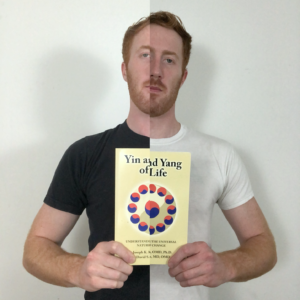 Yin and Yang is a theory of everything that comes to us from ancient Chinese philosophy. It sees all things as comprised of opposites that must exist simultaneously and in conjunction with each other. Day and night, for example, exist together; if all you had was daytime and never nighttime, then day would not be called day, it would simple be. Same goes for wet and dry, or dark and light. If there was no term, concept, or idea behind things being ‘wet,’ then nothing could ever be ‘dry.’ Things that would be considered dry, would simply be.
Yin and Yang is a theory of everything that comes to us from ancient Chinese philosophy. It sees all things as comprised of opposites that must exist simultaneously and in conjunction with each other. Day and night, for example, exist together; if all you had was daytime and never nighttime, then day would not be called day, it would simple be. Same goes for wet and dry, or dark and light. If there was no term, concept, or idea behind things being ‘wet,’ then nothing could ever be ‘dry.’ Things that would be considered dry, would simply be.
This concept of the duality of all things also applies to people. “While a person may seem hard on the outside, in general those people are covering up a very soft internal personality.” Our authors continue: “Conversely, people who may appear soft by nature may carry a great deal of strength inside.” This is the epitome of the stereotypical high school student, i.e. the quiet kids show resilience to an uncomfortable youth and go on to be brainiacs and win Nobel prizes in physics and the loudmouths and classroom disrupters often have far less career prospects and less success in life. (This is a broad stroke and not a hard and fast rule, just something I have found to be relatively true in my own personal experience.)
The catch with yin and yang is that while all things are typically classified as either yin or yang, they in fact always reside together. You will never find one without the other. “On one hand, yin and yang oppose one another, creating conflict, tension, friction, and discord. On the other hand, they complement one another, creating dynamic harmony, balance, equilibrium, and stability.” It all depends on what lens you look through. When viewed through an economic lens, “work and labor (yang) are converted into money (yin) when people are financially compensated for their work. Money can then be converted back into work and labor when it is used to pay people for their efforts.” In science, “matter (yin) has a tendency to transform into energy (yang), while energy has a tendency to turn into matter.” In music, “the lower the pitch an instrument produces, the more yin it is; the higher the pitch, the more yang.” Feminine energy is yin, masculine is yang, and so on.
One of the most interesting takeaways from this book was how the eastern approach to medicine differs from ours in the west. While western medicine is exceptional at diagnosing and treating injury and illness, it falters when treatment disregards the function of the whole being. “According to eastern medicine, disease results when there is an imbalance of yin and yang in the body,” and eastern medicinal remedies typically focus on repairing this imbalance, usually through diet and more natural (and herbal) ways. You can see this in the extensive list of side effects accompanying medicines prescribed in western countries. Comparatively, I challenge you to find a negative side effect from drinking green tea.
I think the idea behind yin and yang really gets interesting in exactly that realm—the realm of ideas. For example, ego and humility. I posit that you cannot have one without the other, and that like yin and yang, they always exist together. Same with the traditionally converse ideas of freedom and discipline, and also hope and fear. “This paradox is the very nature of yin and yang, either positive or negative depending on the perspective of an observer. Both positive and negative actions result from this dynamic and harmonious alliance. The bonding and interaction of yin and yang are absolutely essential for existence and the sustenance of all life and universal activity.”
All things exist in harmony with their opposite. We must recognize and appreciate both.


Leave a Reply